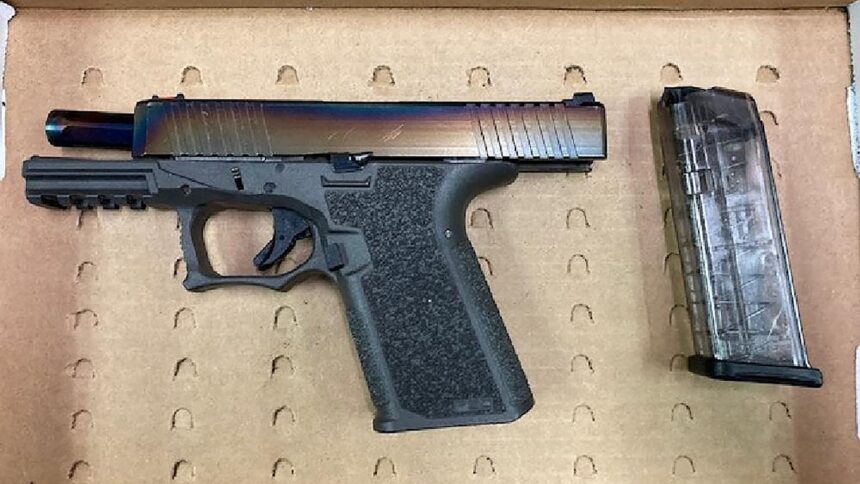The Supreme Court on Tuesday appeared to uphold government regulations on firearms equipment that make untraceable weapons known as “ghost guns.”
The Bureau of Alcohol, Tobacco, Firearms and Explosives — responding to the high number of ghost guns found at crime scenes — released new rules in 2022 that treat such kits and partially complete gun frames and receivers as traditional firearms, requiring merchants to serialize. weapons, conduct background checks on buyers and enforce minimum age restrictions. The industry is suing to block it.
During the oral arguments in the case, Garland v. VanDerStok, the majority of judges seemed skeptical of the idea that kits “ready to be converted” into a functional weapon with, sometimes less than an hour, should be exempt from federal gun laws.
“What’s the point of selling receivers without drilled holes?” asked Chief Justice John Roberts of the gun kit maker’s lawyer Peter Patterson.
“Some people enjoy, like working on cars every weekend, some people want to make their own firearms,” Patterson said. “So the purpose of the sale … is to help and provide material to individuals who can do it.”
Roberts answered skeptically, saying, “Well, I mean, drilling a hole or two, I would think, does not give the same sort of reward that you get from working on the car on the weekend.”
The government contends that the manufacturer made the design partially complete on purpose to violate the law.

The home-built firearm known as the “ghost gun” used in the fatal shooting of Angellyh Yambo is shown in this April 8, 2022, handout photo.
Bronx District Attorney via Reuters
The Gun Control Act of 1968 defines a “firearm” as any weapon designed — “or capable of being readily modified” — to expel a projectile. It also expressly includes “the frame or receiver of the weapon.” It does not define the term frame or receiver.
A kit of parts, noted Justice Elena Kagan, is “analogous to an IKEA desk kit” – it will still be considered furniture even if it is still not assembled in the box, she suggested. Many of his colleagues seemed to agree.
Some conservative judges, however, voiced concern about where to draw the legal line over the gun frame or non-functional receiver, specifically when one will count as a “firearm” under the law and when it will not.
“Every piece of paper and pen is not a grocery list,” Judge Neil Gorsuch said.
Justice Brett Kavanaugh worried that some unwitting firearms parts makers could be “unwittingly swept up in the ban.”
Justice Samuel Alito suggested the government’s definition of framers and regulated receivers might be too broad.
“I put out on the counter some eggs, some chopped up ham, some chopped up pepper and onion. Is that a western omelette?” Alito asked Attorney General Elizabeth Prelogar, defending the ATF regulations on behalf of the Biden administration.
“No,” replied Prelogar. “Some items have other uses that are well-known for being things other than omelets. The main difference here is that this weapon parts kit is designed and intended to be used as a combat instrument and serves no other purpose.”

Guy Boyd and his mother Denise Wieck of Ann Arbor, Michigan, want ghost guns — self-loading weapons that cannot be tracked — to be regulated the same as functional firearms. Boyd is accidentally shot by a teenage friend with a ghost gun.
ABC News
Ghost weapons are also being recovered from crime scenes at an alarming rate, according to Justice Department data. In 2017, the ATF collected 1,600 guns without serial numbers; four years later in 2021, that number will be 19,000 — a 1000% increase.
They also enjoy great popularity among teenagers, who cannot legally purchase weapons from licensed dealers before the age of 18.
“ghost weapons kab. It’s in the name: it’s a gun. It’s a firearm. It’s a projectile,” said Guy Boyd, a Michigan man who was accidentally shot in the face by a high school friend with an improvised firearm. Both were 17 when it happened. “It’s something that can take someone’s life, or almost take someone’s life. In my opinion, they should be treated like ordinary guns.
Boyd, 20, lost his right eye in the ordeal and now suffers from chronic seizures, memory problems, depression and anxiety.
“The teenager (who shot Boyd) shouldn’t have been able to buy a weapon like that, but he was able to order a gun building kit and build it at home,” said Eric Tirschwell, executive director and lead trial counsel at Everytown for Gun Safety. “The industry is really undermining the ability of parents to keep their children safe and support teenagers in a way that is really regulated to prevent it.”
Pro-gun groups that oppose the rule say the danger is exaggerated and that the law doesn’t apply to products that don’t fully function.
“There is a world of things under the law that are not ‘guns.’ There’s a world of law that goes into guns. We can all agree on that. It’s about drawing the line between those two worlds,” said Cody Wilson, co-founder and CEO of Defense Distributed, one of the largest gun parts makers and plaintiffs in the world. high court case.

Cody Wilson, co-founder and CEO of Defense Distributed, asked the US Supreme Court to kill the Biden Administration’s regulation of gun kits.
ABC News
“This rule is about taking a physical article in a state that is almost finished and organizing it and saying, ‘Well, it’s pretty close,'” he said. “We didn’t agree that they were organized in the first place.”
During arguments Tuesday, Prelogar said new data showed a drop in the number of ghost guns in circulation — a sign that the regulations are working. He warned the court not to reverse course and open the floodgates.
“If this court now says that one unwanted loophole is enough to exempt these products from regulation, then that would be a game-changer in how the Gun Control Act is enforced,” he said. “At that time it could not function because all manufacturers everywhere can only exempt products from the law through a simple expedient. And that means going forward, all guns can be ghost guns.”
For a family like Boyd’s the stakes are all too high.
“A minor or a mentally challenged person – there’s no reason to be able to buy a gun online that you can’t track,” said Denise Wieck, Boyd’s mother. “For kits not considered guns are just amazing. The guns are very easy to get out, and a lot of them are ghost guns because people have bought what they shouldn’t have been able to buy.
A decision on the case is expected by the end of June 2025.




